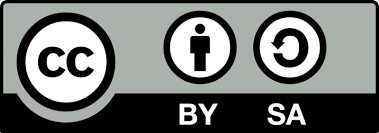The evaluation of equity in education: Proposal of instruments based on European collaboration
DOI:
https://doi.org/10.23824/ase.v0i30.633Downloads
Abstract
European countries have made the right to education universal; but it's not enough. Education plays a key role in determining what our adult life will be like and it has been shown that an individual's level of education correlates directly with the quality of future life. Consequently, there is a need for schools and education systems to focus on equity, as a measure of achievement, justice and opportunities to ensure that socioeconomic features, educational needs, origin and gender are compensated and that all school children can achieve the same kind of healthy lifestyle.
Educational stakeholders have a key role to improve equity in education. In this context, school autonomy can boost school excellence so that the binomial equity and excellence contributes to all schoolchildren have the same opportunities to access a high-quality education. These reasons led the Inspectorate of Education of Catalonia to coordinate an Erasmus + project to promote the evaluation of equity in schools, based on raising the awareness of school leaders.
Thanks to the shared practical knowledge on different educational systems, several institutions from five European countries agreed a working framework based on a new definition of school equity. From this definition, 6 dimensions and 25 sub-dimensions were established, which were defined using a rubric with four levels of achievement. This rubric, along with a dashboard of indicators, allows schools to carry out a self-assessment of school equity from which they can establish improvement proposals to make progress in their path towards quality.
How to Cite
Issue
Section
Published
Keywords:
school assessment, equity, education best practice, rubric, indicators, erasmusLicense

Attribution Share-Alike CC BY-SA
Those authors who have publications with this magazine, accept the following terms:
A) The authors will retain their copyrights, which will be simultaneously subject to the Creative Commons Attribution License that allows others to re-mix, modify and develop on your work even for commercial purposes, provided they credit you And to license their new works under the same terms.
B) The authors will retain the rights of exploitation of the intellectual property of this work, and especially the rights of reproduction, distribution, transformation in any of its modalities and public communication of said work, which will be simultaneously subject to the License Of recognition of Creative Commons that allows others to re-mix, modify and develop on your work even for commercial purposes, provided they credit you and license your new works under the same terms.
Creative Commons Attribution-ShareAlike 4.0 International Public License

